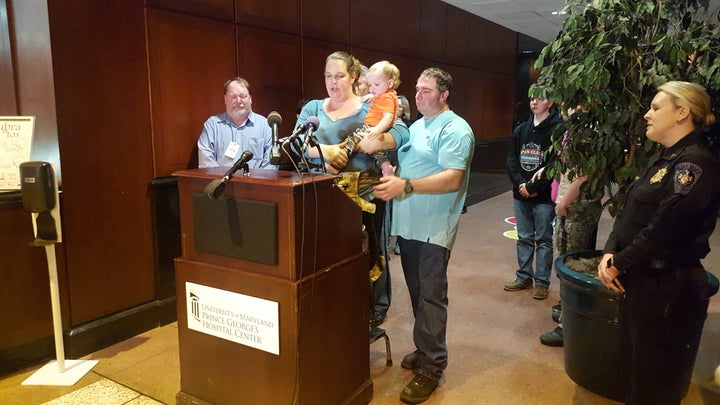
Late last week, Jaelynn Willey’s parents made the gut-wrenching decision to take their daughter off life support. Two days earlier, a fellow student had shot her in the head at her Maryland high school, just before the start of morning classes. She was 16 years old.
According to The Associated Press, Time and other media outlets, the 17-year-old boy who killed Jaelynn did it because he was ”lovesick.” The St. Mary’s County Sheriff’s Office reported that the two had been in a relationship that had recently ended. The way the papers and the sheriff described the turn of events suggested cause and effect, as if the romantic rejection made the shooter so ill that he “snapped.” As if he had no choice but to take his father’s gun to school, find Jaelynn and end her life.
Austin Rollins was not lovesick; he was dangerously, homicidally entitled. He was a young man who believed he had the right to take the life of a young woman who did not want him. And like many who have killed the people they “love,” Rollins had no known history of mental illness. No wonder people who knew him said they were shocked by what he did.
But none of these things ― the rage, the gun, the violence, the death ― should be surprising. Even the professed shock isn’t surprising.
“He was not 'lovesick'; he was dangerously, homicidally entitled.”
Teen dating violence is a widespread problem, one that gets far too little attention. According to Love is Respect, a 24-hour support resource for teens, 1 in 10 high school students has been purposefully hit, slapped or physically hurt by a boyfriend or girlfriend. One in three adolescents in the U.S. is a victim of physical, sexual, emotional or verbal abuse at the hands of someone they date. Across all age groups, the presence of a gun in a domestic violence situation increases the risk of homicide by 500 percent.
According to the National Domestic Abuse Hotline, “abusive behavior in an intimate partner relationship and mental illness are two separate entities.” Mental illness doesn’t cause someone to abuse their loved ones. And it doesn’t manifest in select relationships; it usually shows up in all of the person’s relationships ― with family members, partners, friends and colleagues.
By contrast, an abuser reserves his abuse for his primary relationship and presents a fake persona to everyone else. That’s why people are often shocked when an abuser commits violence in public.
“One in three adolescents in the U.S. is a victim of physical, sexual, emotional or verbal abuse at the hands of someone they date.”
Our collective refusal to talk about how often school shootings are fueled by young men’s anger towards their female peers is insidious. Our collective, and perhaps, wilful ignorance about the link between male rage and female death is dangerous.
How many times do we have to hear a young man who is about to kill his peers record his rage towards women? Women who have rejected him, women who are “arrogant,” women who need to be put in their place? Women who are killed because, “If I can’t have you, then no one can.”
For more than 20 years, I have taught middle school and high school boys how to navigate challenges like friends who are bullies, parental expectations, social media drama, hazing and heartbreak. I have also listened to them share how frustrating it is to grow up feeling you can never back down, and being pressured to pretend you care about nothing but March Madness and Fortnite (the video game boys are obsessing over right now).
Many of our boys really are suffering under the crushing weight of defining masculinity by domination. It doesn’t make boys “soft” to admit this ― it allows them to be the men of honor they want to be. If they aren’t given the tools they need to navigate the minefield that is masculinity, they pay the price, and sometimes, so do the people around them.
“Many of our boys really are suffering under the crushing weight of defining masculinity by domination.”
It is not condemning all boys and young men to accurately describe the dynamics that empower some boys to bring violence bursting through our school doors. I am certain that the vast majority of young American men would do anything to stop the violence, but don’t know how.
If it’s been a while since you were a young person or attended school, or if you think you know the solutions to these problems, think again. The easy answers ― like arming teachers ― often make us feel better, but don’t actually solve the problems that bring those guns to school.
The solutions we’ve tried so far ― like installing more metal detectors and hiring more armed security personnel ― don’t decrease the likelihood of school violence, because they don’t address the core problems. To make schools safer, we need to get beyond superficial solutions to substantively address the causes of violence affecting young people.
In addition to the impact of dominating masculinity in our culture are increasing rates of depression, anxiety and isolation. The National Survey on Drug Use and Health shows that major depressive episodes among teens rose by 56 percent between 2010 and 2015. Forty-six percent more 15 to 19-year-olds committed suicide in 2015 than in 2007 — and 2.5 times as many 12 to 14-year-olds killed themselves.
Educators must begin by acknowledging that most young people see adults abuse power themselves. They see coaches who psychologically abuse their players and then tell the boys they are a “family.” They see teachers who watch fellow educators bully students and do nothing about it. The hard truth is that good adult role models are hard to find, often because we weren’t taught how to stand up to abuses of power ourselves.
“Eighty-one percent of parents believe teen dating violence is not an issue, or admit they don't know if it's an issue.”
Parents can support these efforts by supporting schools and by educating themselves. Love is Respect reports that 81 percent of parents believe teen dating violence is not an issue, or admit they don’t know if it’s an issue. An almost equal proportion weren’t able to identify signs that their child might be in an abusive relationship.
We also need to take a hard look in the mirror and ask the following: Do we express our anger to the people in our homes respectfully? Do we treat ourselves and other people with dignity when we are angry? And for those of us who have abuse and violence in our families: Have we talked appropriately with our children about it? Have we taken steps to keep our children safe?
If we want to end the violence in our schools, we have to be brave enough to face the root causes. We have to admit that sometimes, we fail to see things as they really are. The irony that’s endangering so many of our children is that as long as we are “shocked,” as long as we describe these killings as “senseless,” we will remain blind to the warning signs and fail to take action.
But if we can find the strength to really see the danger before us, we can meet it before it destroys more lives. The times call for us to be brave. Our children are calling on us to be brave. I am calling on us to be brave, so we can help future perpetrators and victims alike.
Rosalind Wiseman is a teacher and the bestselling author of Masterminds & Wingmen and Queen Bees & Wannabees, the book that inspired the movie “Mean Girls.” She is the creator of the curriculum Owning Up: Empowering Adolescents to Confront Social Cruelty, Bullying, and Injustice and the founder of Cultures of Dignity.
Need help? In the U.S., call 1-866-331-9474 or text “loveis” to 22522 for the National Dating Abuse Helpline.
